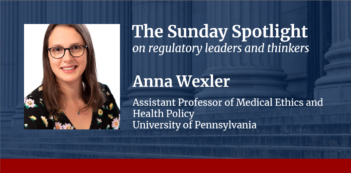
Legal experts argue that the fertility industry is largely unregulated and poses risks to patients.
As of 2018, in vitro fertilization (IVF) has resulted in the births of approximately 8 million babies. IVF has also created a lucrative industry in fertility services.
But this industry poses risks that remain unregulated, argue law professor Steve Calandrillo and lawyer Chryssa Deliganis. The lack of regulation has led to a “wild West” mentality in fertility clinics, where “cash is king and informed consent is optional.” With minimal regulations and hefty price tags, IVF providers have little incentive to inform patients of risks, explain Calandrillo and Deliganis. They argue that the United States needs to improve its regulation of assisted reproductive technology.
Fertility clinics use assisted reproductive technology for fertility services. The most common procedures are traditional IVF and intracytoplasmic sperm injection (ICSI). Traditional IVF is a procedure in which a physician retrieves mature eggs from a patient’s ovaries, fertilizes the egg with sperm, and transfers the fertilized egg into a uterus. Many patients prefer IVF over earlier assisted reproduction techniques because IVF procedures are quicker and do not require invasive surgery.
But because IVF only treats female infertility, researchers developed ICSI to address male infertility. The ICSI procedure isolates a single sperm and injects it directly into the egg. In 2011, ICSI accounted for 67 percent of all treatments that used assisted reproductive technology.
Calandrillo and Deliganis note the dangers of assisted reproduction that soon-to-be parents may not know. For example, before pursuing an IVF or ICSI option, patients commonly receive fertility drugs to stimulate ovulation. Ovulation drugs are associated with multiple gestation and multiple births: Over 30 percent of assisted reproductive procedures result in multiple-birth infants, the vast majority of which are twins. Parents are not necessarily aware that such multiple-birth pregnancies make pregnancy complications, preterm delivery, and health problems for the mother and children more likely. Moreover, these pregnancies cost significantly more than single child births.
Even single-child births using assisted reproductive technology pose risks, Calandrillo and Deliganis explain. For example, ICSI increases the chance of a child developing genetic conditions or health problems such as a congenital heart defect. Because of this danger, some experts urge that prospective parents should only use the ICSI procedure as a last resort.
Health care professionals do not always communicate these dangers to patients due to the limited state and federal regulation of the fertility industry, argue Calandrillo and Deliganis. Although some industry groups have instituted guidelines for fertility clinics, no mechanisms exist to enforce those guidelines. This absence allows clinics to self-regulate and operate in a free market.
Calandrillo and Deliganis explain that the federal government’s reluctance to fund research on embryonic and reproductive medicine has limited the oversight of the U.S. Department of Health and Human Services.
Other federal agencies limit their own control over assisted reproductive technology. The U.S. Food and Drug Administration avoids most direct oversight but recently regulated cloning and classification of devices used for assisted reproduction. The Centers for Disease Control and Prevention, which has the authority to regulate fertility clinics, catalogs laboratory certifications and pregnancy success rates. But the agency has yet to require clinics to report their advertising claims.
To a large extent, individual states have failed to fill these regulatory gaps. Although states such as Virginia require clinics to disclose success rates before performing treatments, they do not require clinics to disclose the health risks associated with ovulation drugs, IVF, or ICSI.
Rather than through government action, most regulation of assisted reproductive technology exists in professional guidelines published by the American Society for Reproductive Medicine. The Society suggests that industry standards, as opposed to “simple legal restrictions,” allow physicians to exercise their clinical judgment in particular cases. Some critics argue that government oversight of assisted reproductive technology could have negative effects such as interfering with the practice of medicine, increasing costs to patients, and politicizing the fertility process.
Calandrillo and Deliganis maintain that self-regulation is far from enough. Although these industry guidelines cover ethical issues, they do not impose any legal requirements on fertility clinics. The only “real avenue of enforcement,” is a subsidiary of the Society that certifies clinics and compiles data, Calandrillo and Deliganis argue. But clinics do not need certification to operate in the United States.
In contrast, other countries regulate assisted reproduction with a more aggressive approach. The most notable example is the United Kingdom, which Calandrillo and Deliganis suggest should be the model for regulation in the United States. The British government requires clinic licensure, oversees the storage of embryos, and mandates clinics to comply with a code of practice. Moreover, to decrease the likelihood of multiple births, the British government has a conservative approach to the number of embryos produced in IVF treatments.
According to Calandrillo and Deliganis, the U.S. government should encourage for-profit clinics to consider the risks associated with multiple pregnancies. Also, the industry should practice explicit disclosure and informed consent for patients, especially regarding the dangers of ICSI.
Calandrillo and Deliganis conclude that federal regulation and enforceable guidelines are necessary to mitigate health risks for fertility patients.



